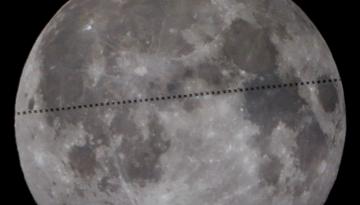Scientists have found traces of a gas known to be produced by living organisms on the planet Venus.
It's got them wondering - could there be life on our burning-hot planetary neighbour?
Phosphine gas on Earth is produced by anaerobic life - organisms that don't rely on oxygen to survive - and it's been discovered in the carbon dioxide-heavy atmosphere of Venus.
"The presence of [phosphine gas] is unexplained after exhaustive study of steady-state chemistry and photochemical pathways, with no currently known abiotic production routes in Venus' atmosphere, clouds, surface and subsurface, or from lightning, volcanic or meteoritic delivery," the study reads.
At its surface, Venus is 465C - way too hot for life to survive, as far as we know, thanks to its atmosphere which is 96 percent carbon dioxide - a greenhouse gas.
The gas was detected in the planet's atmosphere, where it's been proposed in the past microbial life could survive. There's a cloud layer between 53km and 62km above the surface which could provide water and sunlight at a moderate temperature of about 30C.
Calculations found non-life sources of phosphine couldn't account for just how much of the gas there was - falling short by a factor of 10,000.
"In contrast, the team found that in order to create the observed quantity of phosphine on Venus, terrestrial organisms would only need to work at about 10 percent of their maximum productivity," the team at the James Clerk Maxwell Telescope in Hawaii said in a statement.
The difficulty is the clouds above Venus are almost "entirely made of acid", said researcher Clara Sousa Silva of MIT.
Astronomer Fred Watson of the Australian Department of Industry, Science, Energy and Resources said the discovery marks a "dramatic new turn" in the hunt for alien life.
"While the well-observed methane plumes in the atmosphere of Mars seem just as likely to come from ancient volcanism as methane-emitting microbes, the detection of phosphine gas in Venus' upper cloud layers is much more suggestive of biological processes.
"The astronomers who found this rare chemical say they have ruled out other sources such as reactions involving sunlight, surface minerals, volcanoes, lightning or meteorites, leaving only unknown geological or chemical processes - or life."

Brendan Burns, deputy director of the Australian Centre for Astrobiology, said it was an "intriguing" find.
"Far more work is needed to follow up these observations, but even a slim possibility of a biosignature of life existing outside Earth has the profound potential to alter our understanding of our very place in the universe."
The instrument used at the James Clerk Maxwell Telescope to detect the phosphine gas is the same used to take the first-ever photo of a black hole, and has recently been replaced by a far more sensitive tool, dubbed Nāmakanui.
"Like it’s namesake, the big-eyed fish hunting food in the dark waters, we will turn the far more sensitive Nāmakanui back to Venus in this hunt for life in our universe," said James Clerk Maxwell Telescope deputy director Jessica Dempsey.
Previous research has suggested Venus could have been habitable, not too different to Earth, up to about 700 million years ago when something caused a huge amount of carbon dioxide to be released into the atmosphere, causing a hellish greenhouse effect.
"Something happened on Venus where a huge amount of gas was released into the atmosphere and couldn't be re-absorbed by the rocks," NASA planetary scientist Michael Way said last year, after a study into Venus' possible past was released.
"On Earth we have some examples of large-scale outgassing, for instance the creation of the Siberian Traps 500 million years ago which is linked to a mass extinction, but nothing on this scale. It completely transformed Venus."
The latest research into Venus was published in journal Nature Astronomy.






